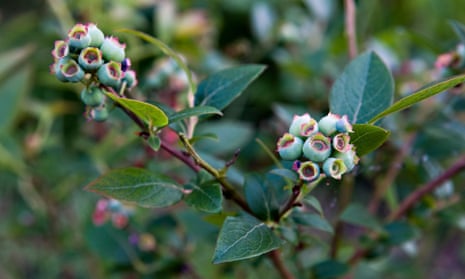For me as a geeky scientist, the single most convincing reason to grow your own has to be the massive diversity of choice it suddenly opens up for you, way beyond the sorry supermarket staples – including crop varieties with measurably higher levels of a range of nutrients. You see, as a plant’s genetics are far and away the most important factor that determines the nutritional compounds they contain, simply picking one variety over another from the seed catalogues that are currently landing on door mats everywhere, you could get harvests that are measurably more nutrient- dense for zero extra effort. Here is a run-down of my top four crops whose unique genetics make them potentially more nutritious.
Carrots
A group of antioxidant orange pigments in carrots known as carotenes has long been associated with health benefits. Pick a dark orange or red one like ‘Healthmaster’ or ‘Atomic Red’ and you could get up to 20% more of this group of nutrients. Weirdly, pick a deep-purple one like ‘Purple Sun’ and you can get a whopping twice the carotene.
Blueberries
Despite a growing body of evidence that anthocyanins, the purple pigments in blueberries (pictured, above), are responsible for the health benefits of scoffing these berries, most supermarkets select larger-fruited varieties with lower anthocyanins. Wild types like ‘Rubel’ are the leaders in anthocyanin content according to independent trials. Want to go one better? British blackcurrants may have up to four times more than most blueberries.
Tomatoes
Much like blueberries, the skin of tomatoes contains far higher concentrations of phytonutrients than their flesh, meaning small cherry types contain far more than beefsteaks. They tend also to be sweeter, richer in glutamates (responsible for their umami flavour) and ripen quicker in short British summers. The key compound that has attracted the most research interest in tomatoes also happens to be responsible for their colour and concentrated in their skin, so the darker red the better. ‘Gardeners Delight’ and ‘Rosella’ are great choices.
Broccoli
Sulphur-based chemicals called glucosinolates are among the key compounds that give broccoli its nutritional benefits. However as much as 80% can be lost in the journey from field to fridge, making growing your own a great option. Picking easier-to-grow sprouting forms can give you double the glucosinolates of the regular large-headed types, too.
Email James at james.wong@observer.co.uk or follow him on Twitter @Botanygeek

Comments (…)
Sign in or create your Guardian account to join the discussion